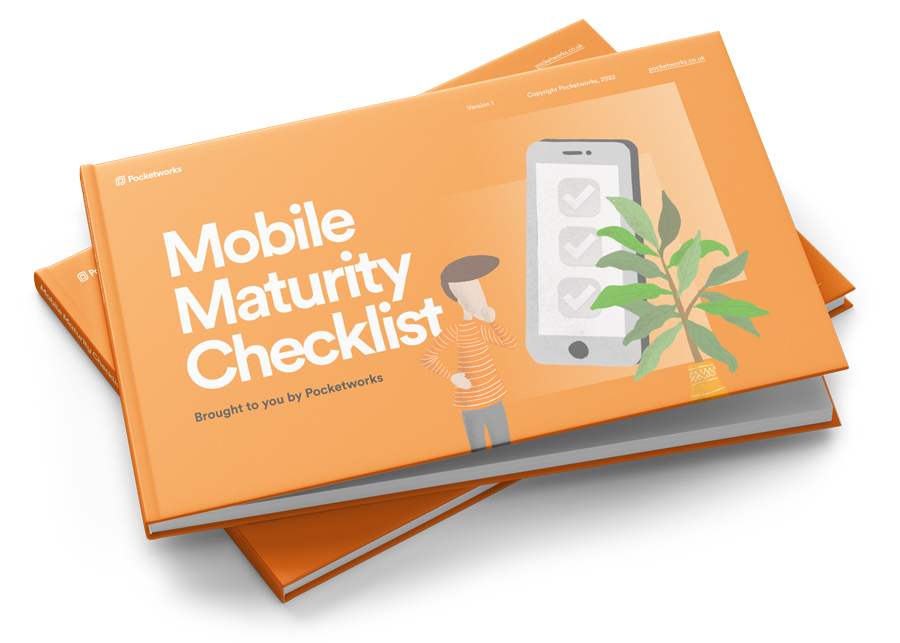There is a lot of mobile marketing tech out. It can help you increase retention, generate referrals, drive sales and measure the effectiveness of your advertising. Essentially, it's all about communicating the right message in the right place, at the right time, to the right people.
If you want to get a feel for what's out there, this article should help. It could save you some time in your own research. As a small disclaimer, I’ve been researching for my own needs although I’m not a marketing expert.
Before looking at the tools, let's start with a whirlwind tour of the kinds of things you can do with marketing tech. This is important so you can see the kind of things I wanted to achieve.
Photo by Volodymyr Hryshchenko on Unsplash
What can you achieve with marketing tech?
Timely Communication
You can send a push message to a user. This is useful to communicate something urgent or timely, such as the taxi is outside, a pizza is on its way or a sudden drop in share prices.
Another option is to send an SMS, which is good if something is urgent and really needs to be read. Everyone reads their SMS messages. I client recently told me they sent over 500,000 SMS messages and saw 25% open rates. The average is 15% for marketing SMS, so this is incredible.
Also, consider sending a desktop web push notification if you want to alert the user of a new news article your site has published, or when someone has posted a comment on a video you uploaded.
Non-Urgent Communication
Showing users an in-app message is good for non-urgent communications. This is handy if you need to communicate something full-screen inside your app. It might be an upcoming price change, some new products or an offer.
You can send an email, such as a payment receipt or a weekly exercise report.
If you're feeling brave, you might also encourage 1:1 communication chat-bots, such as when you want to handle product enquiries or support requests. Even though these are customer-support-oriented, you can use them to push people down the sales funnel, so they're also a marketing technology.
Co-ordinating your communications
A good starting point is to group customers into segments, such as a "frequent buyer" segment. Then, you are able to communicate with just those customers in a unique way using any of the above methods.
Or, you could just blanket communicate with all your customers, which is also known as spamming! Don't do that.
Campaigns can allow you to communicate a sequence of messages over time. For example, a "Welcome" campaign that is targeted at your "New Users" segment, and which sends them a welcome email, followed by a push message to remind them to use the app, and a nice in-app message that explains the most useful features.
You can create campaigns based on geofences to do location-based marketing or use beacons for proximity marketing. This allows you to reach people based on where they are, what they are near, or where they're heading.
You might also run an omnichannel campaign where you send a push message to mobile app users who added something to the basket on the website, reminding them to complete their purchase.
Joining the dots
You can run Facebook or Google adverts with attribution tags so that, when a user clicks on them and installs your app, you know which adverts attracted which app users. You could then create a segment of customers for that advert and communicate with them in a campaign that contains messages specific to the advert value proposition they found attractive.
If you operate social channels, consider posting links on your social feed that deep-link straight into a specific page in your native mobile app. Useful if you want to divert people searching the web or using Facebook straight into your app.
Similarly, show web-to-mobile banners that appear when people browse your site on phones, and prompt them to launch or install your app. Good for converting web users to app users.
You can also ask customers to give referrals. For example, if your customers share their referral code or voucher code, they get rewards for bringing new customers to your product. This can bring organic growth.
Hopefully, this gives you a taster of what you might use mobile marketing technology for. It's basically a set of tools that help you reach people in the right place at the right time with the right message. The goal is usually to retain users and get them more involved in your product so that they will ultimately spend more and get more value from you.
What mobile marketing tools are out there?
Disclaimer: Pocketworks is not affiliated with any of these companies. This is literally what I found whilst looking for my own selfish needs!
I'm mostly interested in mobile marketing, so I was looking at tools that would support a lot of the above. This is list is pretty biased toward mobile marketing tools fit for mobile app developers.
If you want to Google around, these sorts of tools come under a few categories.
- Marketing Automation
- Mobile Marketing
- Push Notifications
- Deel Linking
- Attribution
- Personalisation Engines
Here's some that I found, with a little commentary. Since the commentary is light, I'd suggest you just check them directly or search for them on G2 for more info.
Messaging and Engagement Tools
Iterable
Does everything. Actually looks really comprehensive, mainly because it covers all the key channels (email, SMS etc), has the marketing automation, and the personalisation to adapt messaging to different segments.
Expect to pay £10,000 - £30,000 per year.
Braze
A bit like Iterable.
BloomReach
A bit like Iterable and Braze.
Airship
Started out as push messaging, now does all the things Iterable and Braze do and includes location-based marketing.
MoEngage
Supports tons of channels.
OneSignal
Again, does all the stuff the others do.
Expect to pay about £3K-£6K per year for 100,000 MAUs.
CleverTap
Seems to do all the stuff.
Kumulos
Started as a mobile analytics tool, now supports mobile push and in-app messages. I know Bob, the MD. I hope to try it out someday soon.
Google Firebase
Analytics, push messages, in-app messages and more.
Mobile Attribution Tools
It's useful to be able to link online advertising activities to app installs. This gets quite complicated due to how Facebook and different platforms work, so a tool can take some of the pain away.
AppsFlyer
This one is different because it's more about linking your advertising campaigns through to your mobile downloads and installs.
Branch
Originally a deep-linking tool, now offers addition attribution features to show traffic from SEO and other sources.
Data Aggregation Tools
Hard-coding your app or website to a specific marketing tool can cause problems later on when you try to join up data from different tools. You can use these aggregation tools as a middle-man to collect data from different apps and platforms, and then send it on to the right place. For example, push your data into Segment and then consume it in Amplitude and RevenueCat.
Segment
This is a well-respected option for aggregating data.
MParticle
Don't know much about this one yet.
Referral and Loyalty Tools
Prefinery
This is good for getting the word out as you build up to a launch. And also for refer-a-friend. You can build your waiting list with it and manage automated emails to keep people engaged and encourage them to share. We've seen this one in action and it's worth a look.
Voucherify
Voucherify allows you to issue coupon codes to users, and have users refer other users in return for rewards. It works on mobile apps and websites. We've had a good experience with this one.
Analytics
One thing that many marketing tools have in common is their need to capture data relating to what a customer is doing in the digital product. They use this data to create segments for marketing purposes. Most marketing tools integrate closely with analytics tools. Analytics tools are very good at capturing data about what a customer is doing.
Here are a few tools for capturing analytics and observing users behaviour.
Flutter Marketing Automation Tools?
If you use Flutter, you'll be glad to know that several of these now have you covered. This is handy if you're a Flutter App Developer like Pocketworks. See the list of marketing tools that support flutter.
How much do marketing automation tools cost?
Lord knows, haha. I'm going to have to work on this a bit more as most of these vendors don't publish prices.
When I set out to look at these tools, it was for an app that generates about £300,000 in revenue with about 100,000 MAUs on a freemium model.
Looking at the pricing of OneSignal, that do publish pricing, that would be around £2,700 a year for 100,000 users. But hang on, if we then displayed an in-app message to all those users, that's another £217. If we did that each month, that's an additional £2,600 a year, bringing the total cost to £5,300 a year, or £442 a month. Realistically I think we'd end up spending £3,000 on this based on some back-of-napkin numbers.
By the way, I suspect OneSignal are very competitively priced, and it's actually refreshing to see them publish pricing so I can start to make a business case. 👍
Anyway, once I've spoken to a few more people I'll add more details to this post and mention it on my LinkedIn for those that follow me. You can also subscribe to our monthly newsletter to learn when I update stuff.

